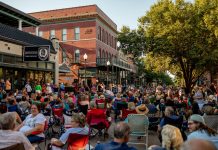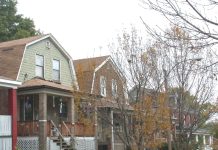Only four structures built before the Louisiana Purchase are left in the Greater St. Louis area. All are located in the City of Florissant and are preserved by multiple historic groups, including the Florissant Valley Historic Society.

The Florissant Valley Historic Society oversees the Taille de Noyer, a home that also functions as a museum. The home, built in 1790, is the only building open to the public. The other historical societies, such as Friends of Old St. Ferdinand and Historic Florissant Inc., work alongside the Florissant Valley Historic Society to preserve history.
“All three of us work together, we are a team … We are effective in maintaining Florissant’s history,” Andrew Theising, Florissant Valley Historic Society board member, said.
The group gears toward educating the community on Florissant’s roots. In recent years, the Florissant Valley Historic Society was inspired by The 1619 Project, an ongoing endeavor by writers of The New York Times to document slavery in the United States. This effort has resulted in a permanent exhibit in the Taille de Noyer house that profiles the enslaved adults who once existed in the home.
Other efforts to educate the community extend to local schools, such as McCluer High School. Taille de Noyer is located on the school’s campus, and the group hopes to share its knowledge with students.
“We’re having some of the freshman class come through our house,” Theising said. “The intention is that all of the freshmen every year will come through the house as part of the ninth-grade curriculum.”
Theising brings into question the way that history is preserved overall. Typically, most people would seek out museums to understand the history and culture of a location. However, this is not the only way people can appreciate historical preservation.
“Museums are important, [but] at the same time, they’re not the most effective way to preserve history,” Theising said. “The most important thing is to get people to privately own, invest and maintain historic structures … [to] keep them as homes and as businesses.”
There are plenty of local businesses with historic preservation incorporated into their design. From taverns to produce and carpentry shops, the area shows that preservation can be integrated into our communities.
For more information on the Florissant Valley Historical Society and its efforts, visit florissantvalleyhs.com.




